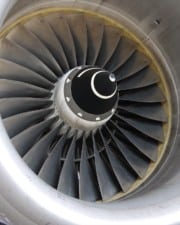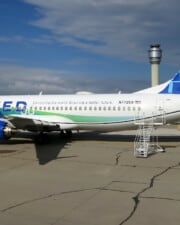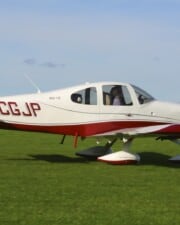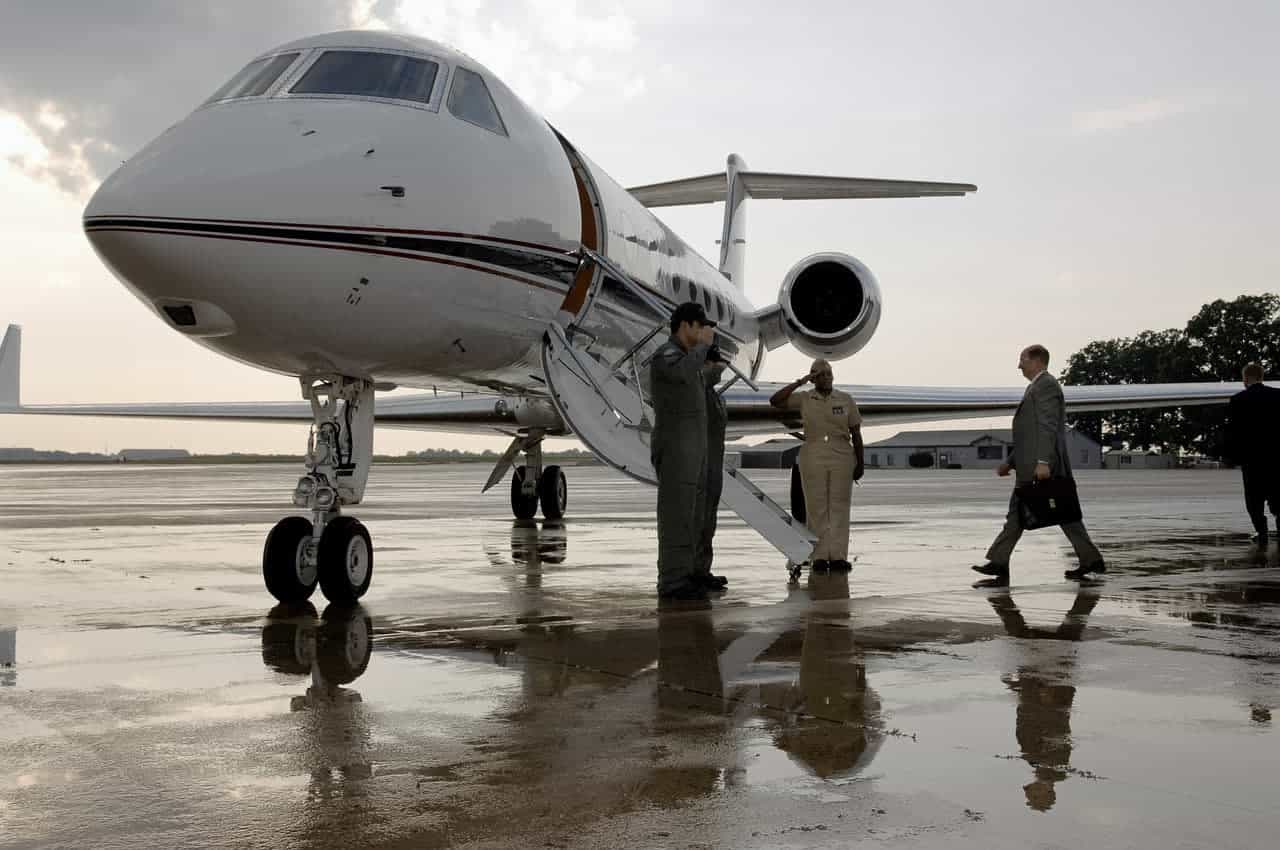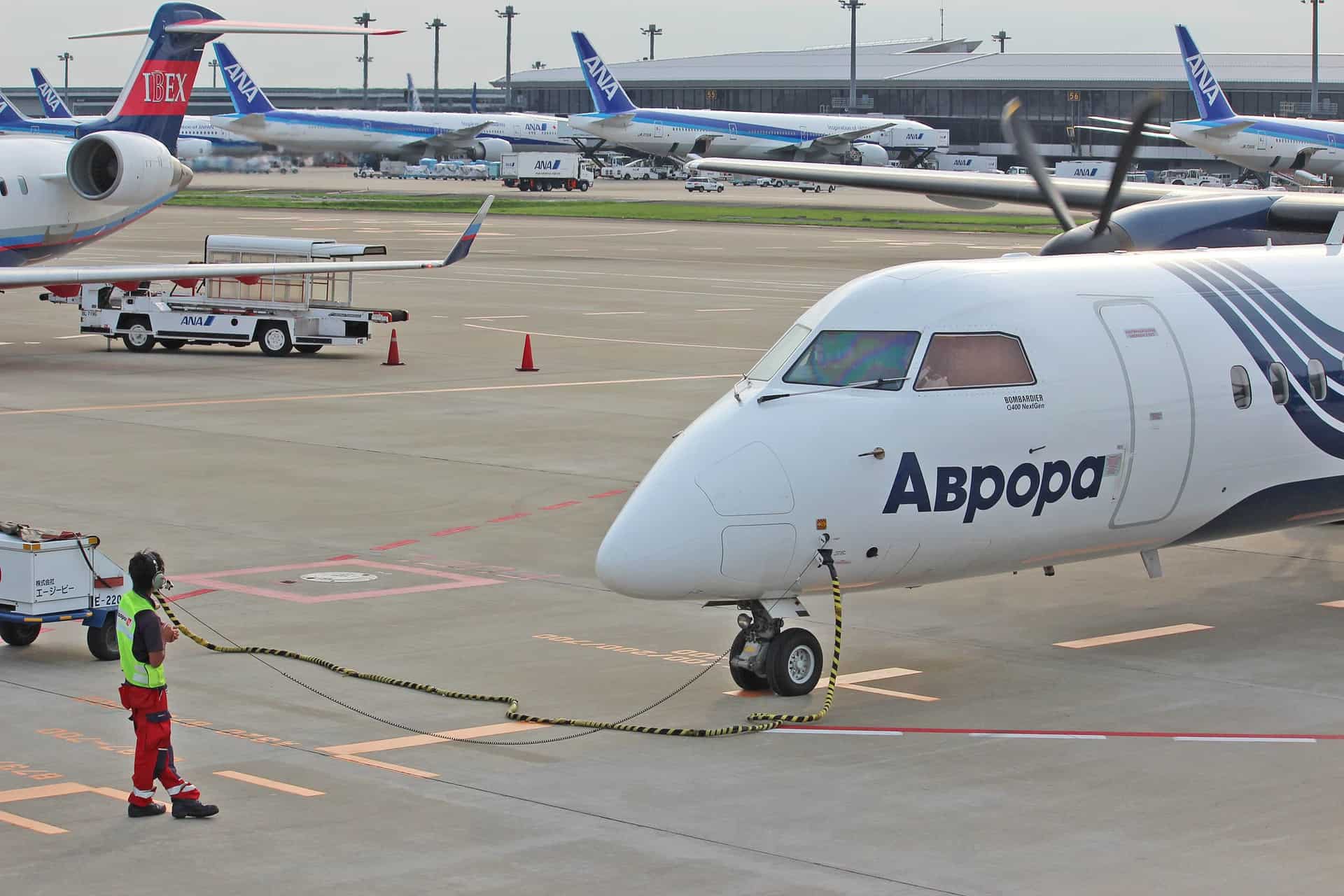Have you ever wondered why there is a tiny jet engine in the tail end of large airliners? What difference could such a small engine make in a huge wide body airliner, right? The APU does not provide any thrust, but is nevertheless indispensable for running and operating the aircraft, as well as for you and the other passenger’s comfort!
The APU or Auxiliary Power Unit is a small jet engine typically located in the tail section of airplanes, and is necessary for starting the main engines. The APU also powers the air-conditioning or heating of the cabin, as well as powering all electric systems while the airplane is on the ground.
Yes, that’s right – as if airplanes weren’t complex enough, most airliners require a tiny jet power plant to start their main engines!
Table of Contents
- How Does an APU Help With Starting an Engine?
- Other Roles of the APU
- Did All Airplanes Have APUs Historically?
- Do All Airplanes Have an APU?
- Is a Working APU Required on Every Flight?
- How Can Ground Equipment be Used Instead of an APU?
- When are GPU, ASU, and APU Used?
- What Does The Future Hold For The APU Technology?
How Does an APU Help With Starting an Engine?
Very similarly to an automobile engine, a jet aircraft engine, be it turbojet or turbofan (and there are some notable differences), operates by ingesting and compressing outside air, mixing it with fuel, and igniting the resulting mixture.
While in a car engine, the air is compressed using pistons, in jet engines, this is performed through an internal air compressor.
As the fuel-air mixture burns inside, the resulting exhaust gas passes through the engine turbine which, in turn, drives the compressor and provides more air for the mixture.
Hence, a running aircraft engine is a closed-loop system that can operate as long as there is an ignitable fuel-air mixture. Starting it, however, is a bit more challenging.
Engine fuel pumps can run on battery power, but the turbine needs a push to initiate rotation and engage the compressor.
That is where an APU comes in.
It will compress outside air, send it to the engine, initiate the combustion process, and accelerate the turbine to a speed sufficient for operating the engine-driven compressor. Once the first engine is running, it can provide air to start the other engine(-s).

Other Roles of the APU
If you have traveled on an airliner in the past, you may have noticed how, right before engine start, the cabin would get very quiet as the aircraft’s air conditioning system stops working.
Once the engines were running, cabin lights sometimes would “blink” as they turn off and on.
The reason for these phenomena is that up until that point, the air inside the cabin and the electrical power for onboard aircraft systems were supplied to the aircraft by the same system – the APU!
The air processed by an APU compressor can be directed to the aircraft climate control system where it is cooled or heated and sent through the cabin.
Then, prior to engine start, all available air from the APU is sent to the engines, thus the sudden quietness inside the airplane.
APU power generation is accomplished through an alternator to which it is connected. The APU is frequently used for power supply at the gate and until after the engines are started.
The quick blinking of cabin lights occurs when aircraft systems switch to engine generators for power supply.
An APU is strong enough to provide all necessary power to the aircraft for extended periods of time. For that reason, APUs on many airliners can be started in flight to keep aircraft systems operational as needed (e.g., in case both engines fail).
Remember US Airways Flight 1549, an Airbus A320 that lost both engines after takeoff from New York La Guardia airport and ditched in the Hudson River?
The successful outcome of that accident was credited in part to the crew’s decision on starting the APU immediately after the engines lost power.
Using APU for cabin air supply can also assist with operations in less favorable conditions. For example, on very hot days, aircraft performance is degraded due to lower air density.
Thus, using all available engine power becomes crucial but can be hard as some air is redirected to the cabin.
To help with the issue, operational procedures for many aircraft, such as Boeing 747-400, allow pilots to keep the APU running on takeoff for the purpose of cabin air conditioning.
In this configuration, engines will achieve their maximum performance and passengers will be happy with ice-cold air flowing inside.
Did All Airplanes Have APUs Historically?
The use of APUs dates back to the WWI times when small piston engines served as an additional source of generated electricity to power onboard aircraft systems.
Some American bombers, such as the Consolidated B-24, used the APU for the generation of sufficient electrical power required to start the first engine.
Even the first jet aircraft engine models, such as those for German-made Junkers and BMW airplanes, used piston engines as APUs. The principle was the same – to supply compressed air to the engine.
Eventually, piston engines were replaced with gas turbines to become the APUs that we know today.
In the world of civil aviation, the Boeing 727 was the first airliner to feature an APU. Notably, the Boeing 707, Boeing’s first jet airliner, did not have an APU and required airport support equipment while on the ground.
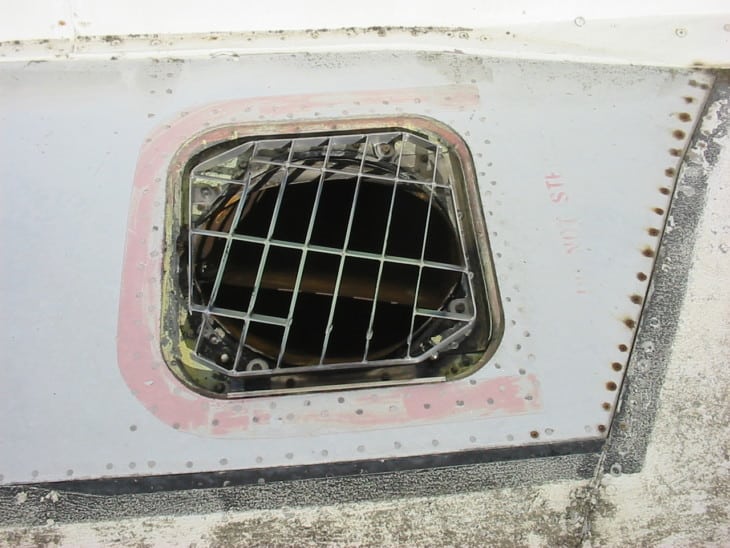
As APUs became more common on jet airliners in the 1960’s and 1970’s, many 707s were retrofitted with APUs to cut down on the amount of time they spent on the ground at an airport.
Do All Airplanes Have an APU?
Not quite. Because the main purpose of an APU is to assist with engine start, you are more likely to see it on airplanes with larger engines that require a lot of air and electrical energy for a start.
Other aircraft, such as piston-powered GA aircraft (eg. Piper Arrow), as well as business jets (e.g. Cessna Citation X), are equipped with engines that are small enough to be started using the electrical power available through the onboard battery.
To put things into perspective, the Garrett 331 series engine (produced by Honeywell after 1999) is installed as an APU on a variety of Airbus and Boeing models. The same engine serves as the main power plant on Beechcraft King Air and several other turboprop aircraft.
Furthermore, installing an APU adds extra aircraft weight, reducing the number of passengers and their baggage that can be carried.
On one hand, a typical APU weighs “only” 200-300 lbs. On the other hand, for Cessna Citation X, that equals a little less than 10% of its maximum allowed payload.
Is a Working APU Required on Every Flight?
APUs provide passenger comfort, reduce ground handling costs, and allow operational flexibility by creating more aircraft autonomy for when it is parked at an airport. Hence, a failed unit is unlikely to create a safety impact on regular flight operations.
The operational impact is mitigated through the use of ground equipment (more on that in the next section). Therefore, in most instances, the worst possible outcome from a faulty APU is a flight delay which could happen if ground equipment is not immediately available.
Occasionally, airlines will choose to bear the inconvenience and continue operating their aircraft without a working APU until a good opportunity for a repair is available.
That being said, there are situations where having a working APU is not simply a matter of feasibility but rather is a necessity and a legal requirement.
This includes flights that operate over water for extended periods of time, such as on transatlantic or transpacific routes.
Twin-engine airplanes operating such routes must comply with Extended Twin-Engine Operations (ETOPS) rules, which require multiple redundancies to ensure safety if one engine fails over water.
For many airplanes, a reliable APU, available for use as an additional source of power in flight, is part of the ETOPS certification.
How Can Ground Equipment be Used Instead of an APU?
As mentioned above, the first jetliners did not come with APUs and required additional ground equipment for electrical power and to start their engines. The same ground equipment is used on modern airplanes when an APU is not available.
Electricity can be provided to an airplane using a Ground Power Unit (GPU). A typical GPU is nothing more than a generator (akin to a household diesel generator, just bigger) that connects to a dedicated aircraft receptacle.
A GPU is a very common piece of equipment on an airport ramp. Even on planes with working APUs, airlines may run a GPU for supplying electrical power. There are several reasons that make it a better option.
First, a GPU consumes less fuel than a running APU, and diesel (common GPU fuel) is cheaper than jet fuel. Second, repairing a mobile unit from wear and tear is a much easier option than removing an APU from an airplane. Hence, using a GPU is more cost-efficient all around.
That being said, some airlines have their own GPUs while others rent ground support equipment (GSE) from airports or other companies that provide it. Hence, whether to use a GPU or resort to running an APU on the ground will depend on the operator’s preference.
To assist with engine start when an APU is not available, airlines utilize Air Start Units (ASU). An ASU comprises a vehicle (usually a truck) with a large air compressor powered by an engine. Much like an APU, an ASU uses the compressor to spool up the turbine.
When an ASU is in use, pilots will typically utilize it to start one engine, then transfer the compressed air from the first engine throughout the aircraft to start the other engines.
Unlike a GPU, an ASU is more commonly used only when an APU is not in working condition.
Even cabin heating and cooling can be accomplished through the use of GSE. There are many options on the market (including stationary and mobile) for supplying conditioned outside air directly into the aircraft through a connecting hose.
When available, these units serve as a good alternative to a running APU.
When are GPU, ASU, and APU Used?
Using an APU provides flexibility in operations. Flight crews of the Boeing 707 needed to start at least the first engine at the gate. It wasn’t uncommon to start all engines before the aircraft was pushed back by a tow truck.
With an APU providing power, engine start can happen while the aircraft is being pushed back from the gate. Such an approach saves time between departing the gate and takeoff.
Although airline operations vary, it is common to see them use a combination of available equipment on the ground.
On a typical scheduled airline flight, an APU is started just after landing and runs until the aircraft is connected to a GPU upon gate arrival.

In this configuration, the flight crew can shut the engines down even before the GPU is connected, allowing passengers to leave the aircraft sooner.
The GPU continues providing power to the aircraft throughout the boarding process for the next flight. Then, pilots start the APU just before they are ready to depart, the ground crew disconnects the GPU, and the engines are started.
Usually, the flight crew shuts down the APU before takeoff.
Of course, the procedure may differ depending on the airport, operational constraints, and other conditions. Sometimes (e.g., on short stops or where ground equipment is not available), the APU will be left running the entire time the aircraft is on the ground.
What Does The Future Hold For The APU Technology?
As the industry seeks greener alternatives to conventional engines, future APU designs will no doubt be different.
Besides the concerns of high emissions, a running APU does add to the overall airport noise pollution. Some airports have already started to address the issue by limiting the use of APUs.
While the APU remains a crucial element of the engine start process, aviation authorities are looking to provide airlines with opportunities to reduce their reliance on APUs for other purposes.
Particular attention is paid to alternative ways for supplying aircraft with electrical power.
Many airports have started implementing new systems that allow connecting airplanes directly to the main electrical grid at the gate.
For more autonomous options, some innovators propose a zero-emissions APU which would generate electrical power in flight and store it in a dedicated battery for later use on the ground.
Given the recent success of using Sustainable Aviation Fuels (SAF) on test flights and in commercial operations, it makes you wonder if SAF will soon gain prominence. Are we, perhaps, only a few years away from SAF-powered APUs? Only time will tell!
Related Posts




